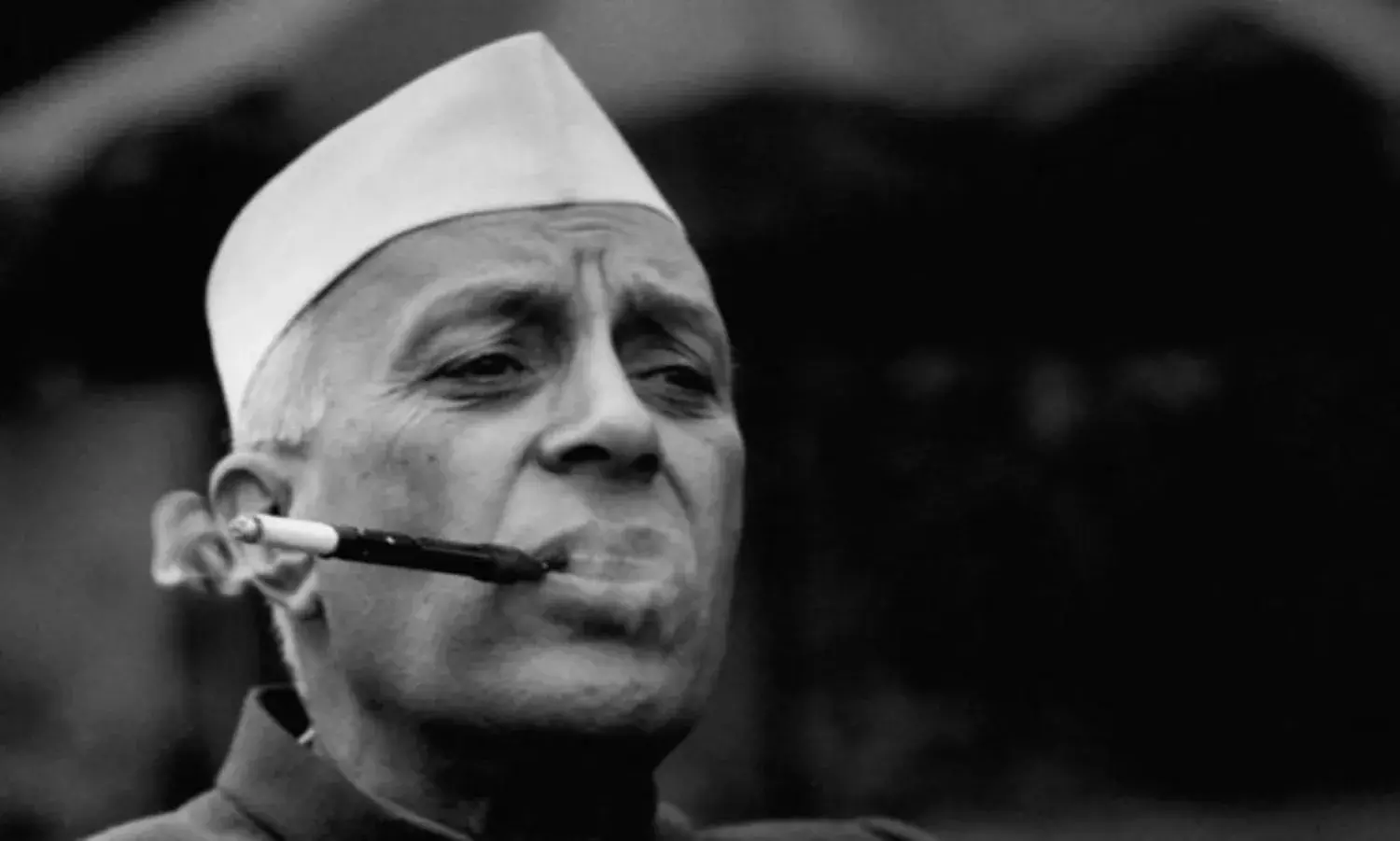Nehru’s Greatest Legacy is Modern Secular Parliamentary Democracy
Jawaharlal Nehru was born Nov 14 (tomorrow),1889.
Now that when Machiavellian attempts are being made by the current ruling dispensation to erase from India’s political history the name of Jawaharlal Nehru – India’s first and, by all accounts, the most popular Prime Minister, it is time to recall, celebrate and indelibly etch on stone his great contribution towards making India a modern secular parliamentary democracy. It has today become all the more imperative when an insidious campaign is also underway to challenge this lasting legacy of Nehru and thus demolish the halo that still surrounds his persona.
Thus it is time to reemphasize the historic role that Nehru had played in country’s freedom movement. It is equally important to reiterate the sterling part that Nehru -- the statesman, had played in giving India a tall stature in the comity of nations.
It further needs to be emphasized that the Non-Aligned movement spearheaded by Nehru, Sukarno and Nasser had become a powerful balancing group between the Western countries and the Communist Block during the cold war years at the end of World War II. The irony today is that the challengers to Nehru’s bequest are the very same parties who have themselves been the beneficiary of Nehru’s lasting legacy.
Nehru had considered the parliamentary democracy as critical bedrock for building a forward-looking and self-reliant country. And every possible safeguard was incorporated in the Constitution to ensure that its fundamental features were not tempered with. Even though many amendments over the past 67 years have changed some of its contours, yet the "basic structure doctrine" has ensured that the fundamental rights granted to the citizens remained sacrosanct and unaltered. India’s political stability over all these years stands in sharp relief to the tumultuous changes and coups d'état that have been the fate of some of India’s neighbours who too had become independent almost at the same time.
Despite Gandhi’s assassination on 30 January 1948, it nevertheless goes to Nehru’s credit that he steadfastly pursued development projects in spite of the turmoil of the Partition and the resultant migration of populations. He left in the competent hands of Sardar Patel the issues regarding the maintenance of law and order and those related to the accession of hundreds of Indian princely states to the Dominion of India. The reassuring presence of Patel was a great help and enabled Nehru to continue without distraction with his development agenda.
Bhakra Nangal Dam was the first to become a symbol of India’s progress. Nehru called it “A Temple of Resurgent India”. Next on the scientific horizon was the establishment of Atomic Energy Commission in August 1948. The Department of Atomic Energy (DAE) took another six years in coming. The Council of Scientific and Industrial Research (CSIR) was yet another important landmark that went on to spawn over the years a network of nearly 40 national scientific and research laboratories.
It is not the scope of this piece to dwell at length on the scores of major industries that Nehru was instrumental in setting up both in public and private sectors in the post-independence decade. State-of-art steel plants were set up at Bokaro, Bhillai and Durgapur in cooperation with West Germany, Soviet Union and the United Kingdom respectively. One of his most notable contributions was the setting up of Oil & Natural Gas Commission in August 1956 despite virulent opposition from foreign oil companies and other vested interests.
That was followed by nationalization of the oil refineries owned by Burmah Shell, Caltex and STANVAC. Indian Oil Corporation was set up to look after the marketing and refining of petroleum products. KD Malaviya as Nehru’s pointman gave India not only its own national upstream oil companies but also set up a chain of downstream refineries and allied petrochemical industries.
Indian Institutes of Technology (IIT) were yet another major legacy left behind by Nehru. Beginning with Mumbai, Delhi, Bangalore, Ahmedabad, Kharagpur and Chennai, there are today 16 such IITs in the country producing yearly thousands of engineers and technologists.
Bharat Heavy Electricals Ltd, Steel Authority of India et al are today some of the Maharatna government undertakings yielding annual revenue worth thousands of crores of rupees by way of dividend and taxes to the Central exchequer. This is not all. There are nearly a hundred major, medium and small government companies covering a wide variety of industries. Many of these public sector companies are like hens that lay golden eggs. The market value of some of these companies today is in lakhs of crores of rupees. Fortuitously, this ‘family silver’ has now become so very valuable that the current Union government finds it convenient to sell some of its chunks in order to reduce the current account deficit.
These are just some of Nehru’s tangible contributions that made India an industrial power of some substance. His critics may find fault even in his positive contributions. However, it needs to be emphasized that the Nehru’s idea were exceptional. If some of these failed to live up to the expectations, then the fault must lie in their implementation. In principle, Nehru’s contribution to India’s industrial and infrastructural growth was based on sound economics. Nevertheless, the nation today must pay homage to Nehru for his tangible contribution to India’s development.
More importantly, Nehru gave his compatriots many fundamental rights and freedoms. Among those was the right to disagree and right to dissent. Unfortunately, some powerful groups today both at the Centre and in the States are trying to undermine these sacrosanct rights to disagree and dissent. Dissent is not only looked down upon but also brutally curbed. Unfortunately, this fear has also infected the media and there is today a noticeable descent into submissiveness. Even seasoned journalists are shying away from taking a contrarian stand. No doubt, the outspoken columnists like Shobhaa De and some of her ilk are rightly worried.
(Raj Kanwar is a Dehra Dun-based senior columnist).





